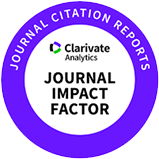SCNN1A regulates PGE2 synthesis in sheep endometrial epithelial cells through the Ca2+/p-CREB/PTGS2 pathway
Abstract
The epithelial sodium channel (ENaC) plays a crucial role in reproductive physiology, yet its specific contributions to sheep endometrial function and embryo survival remain poorly understood. This study investigates the expression and functional significance of ENaC subunits in the endometrium of Hu sheep, focusing on their role in prostaglandin E2 (PGE2) synthesis. Quantitative real-time PCR and immunofluorescence staining revealed that SCNN1A, an ENaC subunit, is significantly upregulated in the endometrium of high-fertility Hu sheep during the luteal phase, while SCNN1B and SCNN1G expression remained unchanged. Notably, all three ENaC subunits (SCNN1A, SCNN1B, and SCNN1G) were localized in the uterine glandular epithelium<italic>. </italic>In vitro experiments using endometrial epithelial cells (EECs) demonstrated that trypsin activates ENaC, leading to increased intracellular calcium levels and enhanced PGE2 synthesis through the upregulation of CREB1 and PTGS2. This effect was abolished by ENaC inhibition, and neither mRNA nor protein levels of SCNN1A, SCNN1B, or SCNN1G were altered by trypsin treatment, indicating that ENaC activation, rather than expression changes, mediates PGE2 production. RNA knockdown experiments further highlighted the pivotal role of SCNN1A in trypsin-induced calcium influx and PGE2 synthesis, with SCNN1A knockdown significantly attenuating these processes. Overexpression of SCNN1A enhanced calcium influx and PGE2 production via the Ca²⁺/P-CREB/PTGS2 signaling pathway. In vivo studies on Hu sheep with varying embryo survival rates revealed significantly higher uterine PGE2 concentrations and SCNN1A expression in high-survival rate groups, suggesting a correlation between SCNN1A expression, PGE2 synthesis, and embryo survival. These findings underscore the critical role of SCNN1A in regulating endometrial function and embryo survival, providing new insights into the molecular mechanisms underlying fertility in Hu sheep.
















